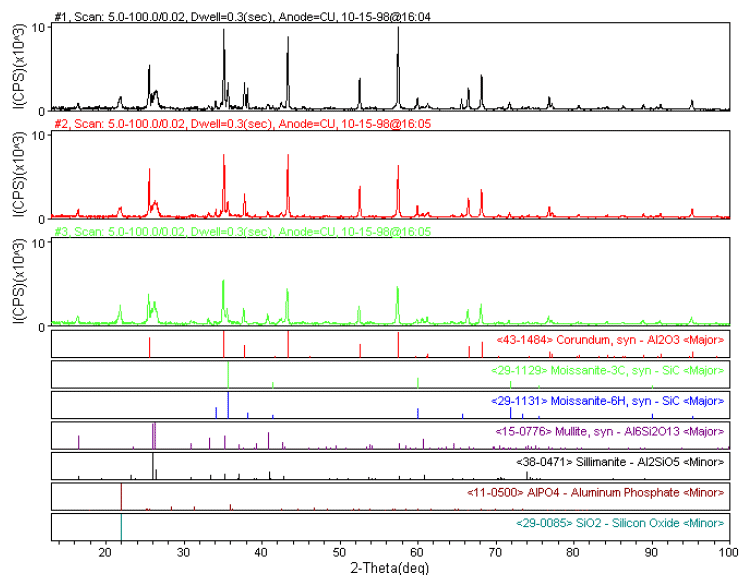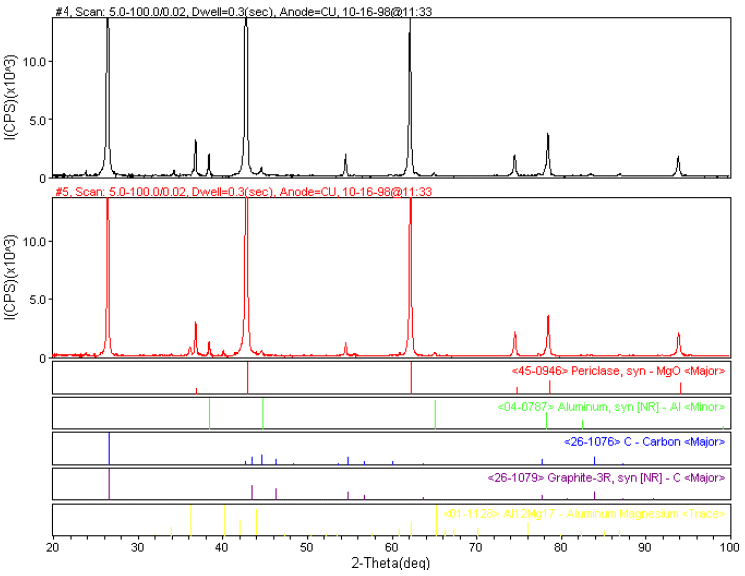Background
X-ray diffraction (XRD) is an effective method for identifying the phases present in unknown polycrystalline powders. The analysis is performed by comparing the diffraction pattern collected from an unknown sample with the diffraction patterns of known compounds. The automated process is called Search/Match (S/M) analysis. XRD is an important technique in the manufacture of ceramic materials. It provides phase analysis of materials throughout the manufacturing process, from raw materials to products.
Investigation
Several refractory powders were front packed into standard round aluminum specimen holders and leveled with a glass slide. No special effort was made to control the preferred orientation in the grains. Standard θ/2θ data were collected using a Rigaku MiniFlex benchtop diffractometer. The experimental patterns were compared with the diffraction scans of pure compounds maintained in the ICDD Powder Diffraction File (PDF). All scans were smoothed, theta corrected, and the background was removed. The results of Search/Match analyses are shown below each plot as a set of stick lines from the PDF.

The diffraction profiles of powders 1, 2 and 3 above suggest that each specimen is composed of nearly identical components. Good matches are corundum, mullite, moissanite, sillmanite, aluminum phosphate and silicon oxide. Mullite and Sillmanite are both aluminosilicates. They have very similar diffraction patterns. Aluminum phosphate and silicon oxide are isostructural. Additional elemental information would facilitate positive identification. There are some intensity differences between samples. Qualitatively some conclusions may be drawn, since the intensity of randomly oriented peaks is proportional to the amount of the substance. The major phase in each sample is Corundum. Powder 1 has the most Corundum and powder 3 the least. Powder 1 contains more Moissanite than the other two samples. It would be possible to get more accurate quantitative information if a series of standards was available to relate the area intensity to a concentration.

Powders 4 and 5 above contain 3 common phases; periclase, aluminum and carbon. XRF analysis of these samples confirms that aluminum is present, and is not an artifact from the sample holder. Additionally, in powder 5, an aluminum magnesium phase is present.
Conclusion
The Rigaku MiniFlex X-ray diffractometer is an effective tool for phase identification of unknown powder samples. Clear interpretation of the presence or absence of various phases can be performed quickly and with a high degree of confidence. Phase identification is easily performed, even on quick data collection scans with high statistical noise. Specimen preparation for most standard materials is minimal since bulk materials as well as powder samples can be analyzed.
